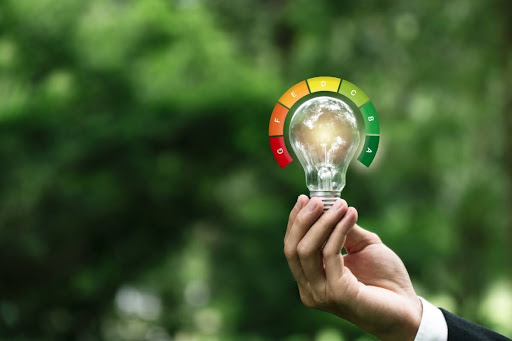Finding the right light bulb can transform any room into a cozy, well-lit space while helping cut back on energy costs. But, with so many options on the market — including LED, CFL, and incandescent — it can be overwhelming for many homeowners to decide which one is best for them.
ServiceWise Electric is here to break down all you need to know about each type so you can make an informed decision for your needs, budget, and energy goals. Backed by over 25 years of experience, we also offer an array of electrical services, including outdoor lighting, light switches, recessed lighting, safety inspections, and more to folks across the Canto, GA region.
Get in touch with us today with any questions about the most energy-efficient light bulbs or to book a service.
Functionality
Light Emitting Diode (LED) bulbs represent the cutting edge of lighting technology. These marvels of modern engineering utilize semiconductor chips to convert electricity into light. When an electric current passes through the chip, electrons become excited and release photons — the particles responsible for visible light. This process, known as electroluminescence, produces a bright, focused beam without generating excessive heat.
Compact Fluorescent Lamps (CFL) bulbs, on the other hand, operate on a different principle. These light bulbs contain a mixture of argon and mercury vapor. An electric current flows through this gaseous combo, exciting the mercury atoms. As these atoms return to their ground state, they emit ultraviolet light. A phosphor coating on the inside of the bulb then converts this ultraviolet light into visible light, illuminating your space with a characteristic soft glow.
Traditional incandescent bulbs, the pioneers of artificial lighting, employ a simpler mechanism. A thin tungsten filament sits at the heart of these classic light sources. As electricity courses through this filament, it heats up to an astonishing 4,600 degrees Fahrenheit. This intense heat causes the filament to glow white-hot, radiating visible light.
Energy Efficiency
LED Energy Efficiency
LED bulbs reign supreme in the realm of energy efficiency. These powerhouses of illumination convert a staggering 90% of their energy input into light, leaving only 10% wasted as heat. This remarkable efficiency translates to substantial energy savings for homeowners. A typical LED light bulb consumes merely 6-8 watts while producing the same amount of light as a 60-watt incandescent bulb.
CFL Energy Efficiency
CFL bulbs occupy the middle ground in terms of energy efficiency. These spiral-shaped wonders convert about 85% of their energy input into light, outperforming incandescent bulbs but falling slightly short of LEDs. A CFL bulb typically uses 13-15 watts to produce the equivalent light output of a 60-watt incandescent bulb.
Incandescent Energy Efficiency
Traditional incandescent bulbs, while beloved for their warm glow, lag far behind in the energy efficiency race. These classic light sources convert a mere 10% of their energy input into light, with the remaining 90% dissipated as heat. This inefficiency means that a 60-watt incandescent bulb produces the same amount of light as a 6-8-watt LED or a 13-15-watt CFL.
Lifespan and Durability
The longevity of your chosen light bulb plays a crucial role in its overall value and environmental impact. LED bulbs take the crown in this category, boasting an impressive average lifespan of 25,000 to 50,000 hours. This translates to roughly 22 years of use, assuming the bulb operates for 3 hours per day. The solid-state construction of LED light bulbs also renders them highly resistant to shock and vibration, making them ideal for high-traffic areas or outdoor applications.
CFL bulbs offer a respectable lifespan of 8,000 to 10,000 hours, which equates to about 7-9 years under typical usage conditions. While not as durable as LEDs, CFL bulbs still outperform their incandescent predecessors significantly. However, it’s worth noting that frequent on-off cycling can reduce the lifespan of CFL bulbs, and they contain a small amount of mercury, requiring careful disposal.
Traditional incandescent bulbs, despite their charm, fall short in the longevity department. These classic light sources typically last between 750 to 2,000 hours, or about 1-2 years under normal usage. Their fragile filaments make them susceptible to breakage from shocks or vibrations, further limiting their practical lifespan.
Light Quality and Other Considerations Like Temperature
Beyond efficiency and cost, the quality of light produced by each bulb type significantly impacts your home’s ambiance and comfort. LED light bulbs offer unparalleled versatility in this regard. Available in a wide range of color temperatures, from warm yellows to cool blues, LED bulbs can mimic the cozy glow of incandescent bulbs or provide crisp, daylight-like illumination. Many LED options also offer dimming capabilities, allowing you to fine-tune your lighting to suit any mood or activity.
CFL bulbs have made great strides in light quality since their introduction. Modern CFL options come in various color temperatures, though their range is not as extensive as LEDs. Some users report a slight delay in reaching full brightness and occasional flickering issues with CFL bulbs. However, for general household lighting, CFL bulbs provide a satisfactory balance between efficiency and light quality.
Traditional incandescent bulbs remain popular for their warm, inviting glow. Their light spectrum closely resembles natural sunlight, providing excellent color rendering. However, this familiar warmth comes at the cost of high energy consumption and heat generation. Incandescent bulbs can significantly increase room temperature, potentially impacting your cooling costs during warmer months.
Let ServiceWise Electric Light the Way to a Brighter, More Energy Efficient Home
An energy-efficient light bulb can make a huge difference in your everyday life. While a traditional incandescent bulb is still a great option for many, LED or CLF is better in terms of lowering your energy bills.
For the best lighting services in the Canton, GA, area, there’s ServiceWise Electric. Contact us today, and we’ll shine a bright light on your eco-friendly future.


